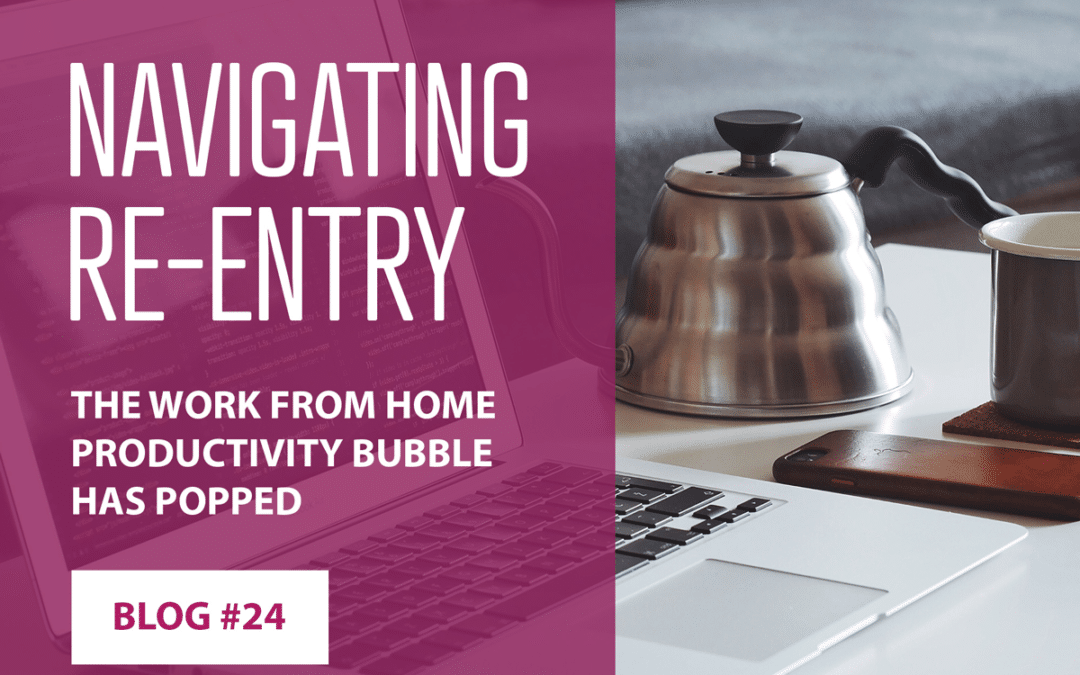It has been months since remote work has become the reality for most workplaces. For many, this has been a victory over the daily commute and grind of never-ending meetings and late nights. Some employees have even moved further away from the office in hopes that this will be their new reality long term. Making the bet that the initial uptick of work from home productivity will remain consistent and be the selling feature for a new work reality.
However, what we freelancers already know, work from home comes with just as many challenges (if not more) than traditional office environments. First is the tension of managing the transition and segregation between family and work. One colleague made the observation that we are now “living at work.” Second is juggling kids, cleaning, cooking and home management in between strategic leadership meetings and big level thinking. I recall once playing lego with my son 10 minutes before a strategy session. I loved every moment of this, but I can’t escape the psychology that my mind doesn’t make the shift from play to business as easy as my body does. Then there is the guilt. The guilt of your kids knocking at your door and wanting to play. The guilt of spending too much time working and not enjoying life. And the work guilt of not feeling like you are performing at your best and that your colleagues are having to cover for you.
I am not surprised that remote work has been extremely successful in the first 3 months after COVID. With the instability of the economy and labour market, everyone was extremely diligent at going the extra mile to show that they are busy, valuable and capable of earning a paycheck at home. Also, there wasn’t much else to do and adrenaline was our friend. I worked 70-80 hour weeks the first four weeks of the shutdown and did so based solely on my fight response.
Yet we need to remain cautious about making drastic over promises as to what work will and will not look like in the next 6 months. However, although many things still remain uncertain as to the future of work, I do believe that some things will remain changed forever.
- People will Demand More Flexibility – All of the excuses of not allowing remote work, at least in the short term, have been proven wrong. Where leaders cited reasons like “productivity will decrease,” “we will lose communication,” and “how will we know if people are working,” have generally been disproven. For this reason, employers will need much better and proven reasons to demand a return to the office full-time. This likely will result in a hybrid solution for most organizations.
- High Touch Will Still Be Needed – High achievers, long term employees and experienced professionals have done well in adjusting to this new norm. I haven’t observed the same with junior or new talent. Onboarding has been a challenge and coaching/training is not as easy over zoom without the advantage of informal observation and communication.
So even if an organization chooses to go all remote they will need to invest significantly in bringing the team together in some form at least quarterly if not more often.
- Trust will Be Challenged – As we move into stage 3 and beyond, employers will begin evaluating monitoring software and options to gauge workload at home. For the worker who has had to juggle taking care of kids and homeschooling, while still contributing well for the company, they will feel violated by this new maneuver. Employers need to remain open and transparent about their intent and navigate these decisions very cautiously and with very good communication.
- We Won’t Be Able to Treat all Talent Equal in Terms of Flexibility & Monitoring – It is commonplace and appropriate to manage your top experienced performers differently than your lower performers and new hires. To many, this subtlety was not as obvious as it will be when some are required to have monitoring devices on their computer or come into work. Good policies will be key here.
- Access to Talent is now Global – This has been true for a while, but now it is true for nearly every role within the organization. Employers see this as an advantage in which it is. At the same time, Employees will have more options which will impact their willingness to accept lower wages and perks for a short commute. This will no longer be a meaningful benefit. For firms outside of major cities, we will see pressure for increased compensations.
So what should you as a leader and business owner be doing or thinking about now?:
- Set the tone that there will be some form of return. Resist the urge to make any sudden big claims about whether or not you are coming back or not. Most workplaces will need to return to a hybrid format where there is more flexibility but mandatory days in the office.
- Communicate bi-weekly to staff. Communicate to all staff every two weeks with COVID and re-entry updates. Emphasize appreciation for how people have stepped up to the challenge but also highlight some of the challenges in working remotely. This will help to mediate resistance in the future.
- Trial re-entry with small teams that are willing and wanting to come back. This gives you an opportunity to trial new office procedures etc.
- Spend conscious time in reconnecting with certain people in the office who seem to know the pulse on everything. As leaders, we have lost all forms of informal communication so we have to be intentional about this.
- Continue to give and show grace but focus on the future and slowly get people on board with ramping back up.
And lastly, take some time off to recharge. It is going to be a busy fall as I don’t think we are out of the woods yet.



